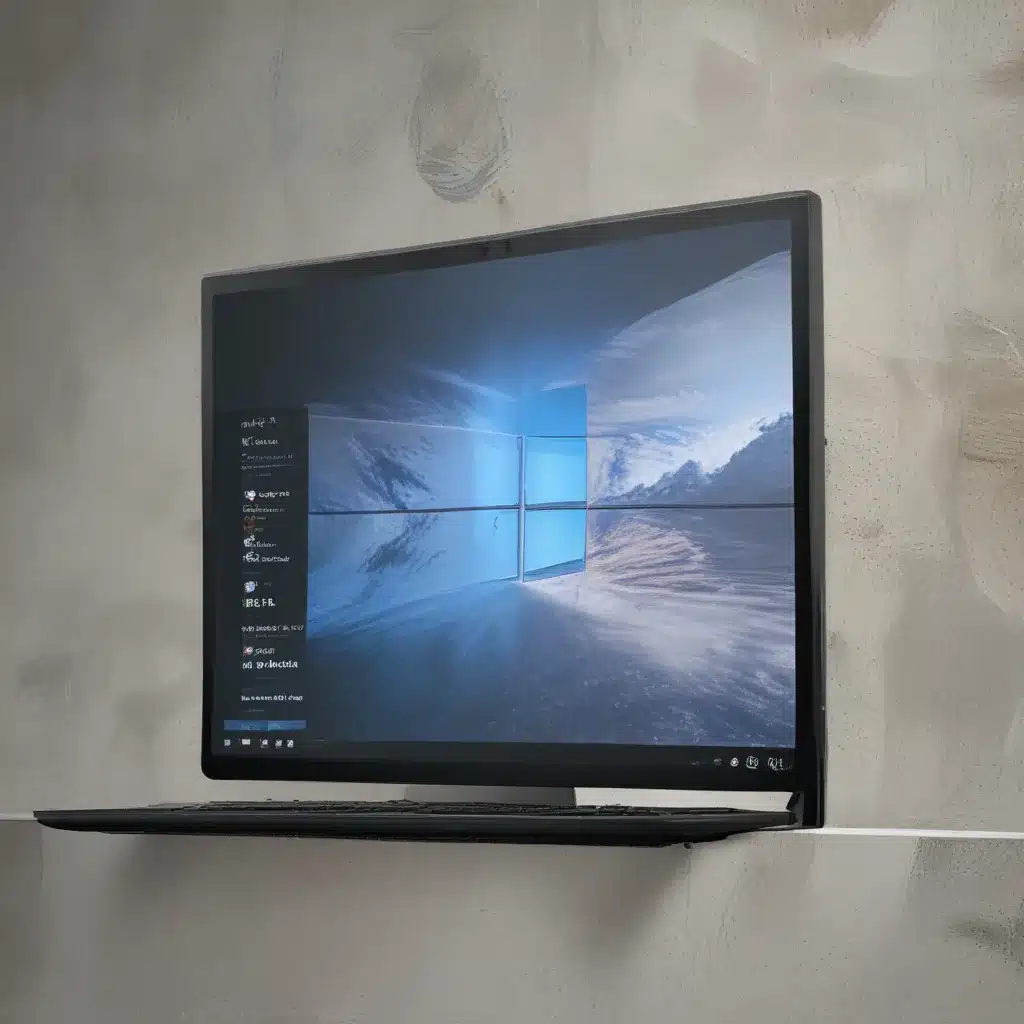
Upgrading to a New OS: A Thrilling Journey Awaits!
As a self-proclaimed tech enthusiast and the resident computer repair expert at https://itfix.org.uk, I’ve seen my fair share of operating system upgrades. From the excitement of discovering new features to the occasional hiccup along the way, upgrading to a new OS can be quite the rollercoaster ride. But when it comes to Microsoft’s latest offering, Windows 11, the experience promises to be nothing short of exhilarating.
Navigating the System Requirements: A Crucial First Step
Before we dive headfirst into the upgrade process, it’s essential to ensure your computer meets the minimum system requirements for Windows 11. According to Microsoft’s official guidance, your device should have at least:
- Processor: 1 gigahertz (GHz) or faster with 2 or more cores on a compatible 64-bit processor or System on a Chip (SoC)
- RAM: 4 gigabytes (GB) or more
- Storage: 64 GB or larger storage device
- System firmware: UEFI, Secure Boot capable
- TPM: Trusted Platform Module (TPM) version 2.0
- Graphics card: Compatible with DirectX 12 or later with WDDM 2.0 driver
- Display: High definition (720p) display, 9-inch or larger display, 8 bits per color channel
Now, I know what you’re thinking: “Wait, what’s a TPM, and why do I need it?” Well, the Trusted Platform Module is a security chip that helps protect your data and system integrity. Microsoft recommends a TPM 2.0, but if your device only has a TPM 1.2, you may still be able to upgrade, as long as you understand the risks involved.
To check if your computer meets the requirements, you can use the PC Health Check app provided by Microsoft. This nifty little tool will scan your system and let you know if you’re ready to take the plunge into the world of Windows 11.
Choosing Your Upgrade Path: Smooth Sailing or Uncharted Waters?
Now that you’ve confirmed your computer’s compatibility, it’s time to decide on the upgrade path that best suits your needs. According to Microsoft’s guidance, you have a few options:
-
Upgrade by Launching Setup: This is the default and most straightforward option, where you can choose to either perform a full upgrade (keeping your personal files, drivers, and settings) or a data-only upgrade (keeping your personal files and drivers, but not your apps and settings).
-
Boot from Media: This path is a clean install, which means you’ll start fresh without retaining any files or settings from your previous Windows 10 installation. It’s worth noting that this option may bypass some of the system requirement checks, so be sure to double-check your device’s compatibility before proceeding.
-
Create an Image Install: If you’re feeling particularly adventurous, you can use tools like DISM or third-party software to directly apply a Windows 11 image to your disk. This method is a bit more technical and may also bypass some of the system requirement checks.
As you can see, there’s a lot to consider when choosing your upgrade path. If you’re unsure which option is best for you, I’d recommend sticking to the default “Upgrade by Launching Setup” approach, as it’s the most straightforward and least likely to cause any unexpected issues.
The Upgrade Process: A Smooth Ride or a Bumpy Road?
Alright, now that you’ve done your homework and selected the right upgrade path, it’s time to get the show on the road. Microsoft recommends waiting until your device has been offered the upgrade to Windows 11 before using the Installation Assistant, as this will ensure a seamless and well-timed transition.
Once you’re ready, you can head over to the Windows 11 software download page and click on the “Create tool now” button to get the ball rolling. Follow the on-screen instructions, and before you know it, you’ll be well on your way to a shiny new Windows 11 experience.
Now, I know what you’re thinking: “What if something goes wrong?” Well, fear not, my tech-savvy friend, for Microsoft has thought of that too. They’ve provided a handy guide on what to do if you encounter any issues during the upgrade process, from bypassing the TPM 2.0 requirement to troubleshooting potential problems.
The Exciting Conclusion: Embracing the Windows 11 Adventure
As you can see, upgrading to Windows 11 is quite the undertaking, but with a little preparation and a dash of excitement, it can be a truly thrilling experience. So, what are you waiting for? Grab your metaphorical seatbelt, and let’s dive headfirst into the world of Windows 11!
And remember, if you encounter any bumps along the way, the team at https://itfix.org.uk is here to help. We’ve got the expertise and the enthusiasm to guide you through the upgrade process, ensuring a smooth and enjoyable transition to your new operating system. So, what are you waiting for? Let’s get this Windows 11 adventure started!












